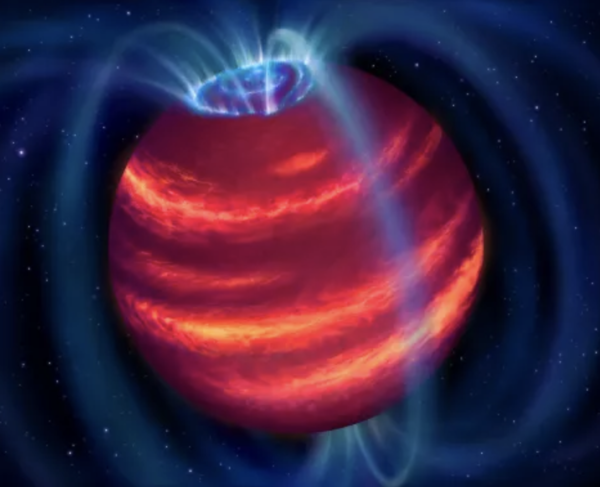Space Weather on Other Worlds
The NRAO and the ngVLA project convened a Special Session titled "Space Weather on Other Worlds" on January 9, 2024 at the American Astronomical Society meeting in New Orleans, LA.
The session highlighted recent scientific breakthroughs in characterizing space weather on other worlds with current facilities; described planned near- and long-term improvements for ground- and space-based facilities; discussed major scientific leaps likely to result from next-generation facilities across the electromagnetic spectrum; and reviewed the highest-priority themes in this area for the state-of-the-art observatories to be commissioned in the next decade.
The session featured these invited oral presentations, whose abstracts are available here:
219.01 Bin Chen (NJIT), The Space Weather Environment Around Stars: Insights from Spatially Resolved Radio Spectral Observations of the Sun
219.02 Jackie Villadsen (Bucknell University), Stellar Activity and Star-Planet Interaction in Radio
219.03 Sebastian Pineda (University of Colorado), Assessing the Stellar Magnetospheric Environments Impacting Exoplanets Across Theory and Observation
219.04 Cynthia Froning (Southwest Research Institute), Characteristics, Activity, and Evolution of XUV Emission from Exoplanet Host Stars
219.05 Melodie Kao (University of California, Santa Cruz), Brown Dwarfs: Bridging Magnetospheric Behaviors from Planets Through the Lowest Mass Stars
219.06 Lia Corrales (University of Michigan), The Power of the XUV in Sculpting Planetary Atmospheres: the Role of Current and Future X-ray Observatories
Contributed iPoster presentations were welcomed. The session also included these iPosters to update the community about ngVLA progress:
204.01 Eric Murphy (NRAO), Science with a next-generation Very Large Array iPoster
204.02 Brenda Matthews (NRC-Victoria), ngVLA Key Science Goal 1: Unveiling the Formation of Solar System Analogues on Terrestrial Scales iPoster
204.03 Brett McGuire (MIT), ngVLA Key Science Goal 2: Probing the Initial Conditions for Planetary Systems and Life with Astrochemistry iPoster
204.04 Fabian Walter (MPIA), ngVLA Key Science Goal 3: Charting the Assembly, Structure, and Evolution of Galaxies iPoster
204.05 Alexander van der Horst (George Washington), ngVLA Key Science Goal 4: Fundamental Physics with Pulsars Using the Next Generation Very Large Array iPoster
204.06 Joe Lazio (Caltech/JPL), ngVLA Key Science Goal 5: Stellar and Supermassive Black Holes in the Era of Multi-Messenger Astronomy iPoster
204.07 Tony Beasley (NRAO), The ngVLA: A Technical Overview iPoster
204.08 Dana Dunbar (NRAO), ngVLA 18m Antenna Design iPoster
204.09 Viviana Rosero (NRAO), The ngVLA Array Configuration iPoster
204.10 TK Sridharan (NRAO), An Update on ngVLA Calibration iPoster
204.11 Joan Wrobel (NRAO), An Envelope Observing Program for the ngVLA iPoster
204.13 Tony Remijan (NRAO), The ngVLA Concept for Science and Data Center Operations iPoster
204.14 Anja Fourie (NRAO), Towards an integrated broader impacts strategy for the next generation Very Large Array iPoster





